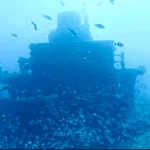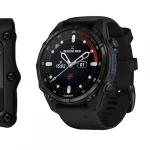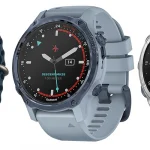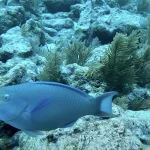Introduction to Key Largo’s Diving Heritage
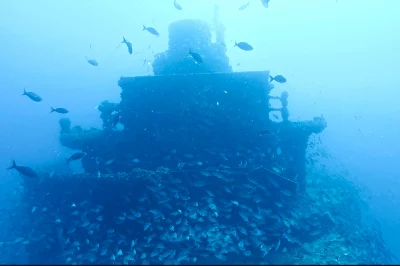
Table of Contents
- Introduction to Key Largo’s Diving Heritage
- Planning Your Diving Itinerary
- Top Five Historic Shipwrecks to Explore
- Maximizing Safety While Wreck Diving
- Unraveling the Myths: What to Expect Underwater
- Avoiding Common Diving Mistakes
- Promotional Packages: Dive More, Spend Less
- Future Trends in Scuba Diving Experiences
Introduction
Embark on a thrilling underwater adventure with ‘Key Largo Wreck Diving Package’, specially curated for scuba diving enthusiasts eager to delve into the rich history of sunken ships. Explore five historic wrecks in a single extended weekend, guided by expert instructors and supported by top-of-the-line facilities and packages. This blog post will guide you through the essentials of planning your wreck-diving itinerary, maximizing your diving experience, and uncovering the stories behind these underwater relics.
Introduction to Key Largo’s Diving Heritage
Planning Your Diving Itinerary
Crafting an efficient diving itinerary in Key Largo involves careful preparation, understanding certification requirements, and selecting appropriate gear. Before arriving, ensure you have valid proof of certification—most dive centres require divers to show credentials such as PADI, NAUI, or SDI certifications, especially for Open Water and advanced dives. If your last dive was more than two years ago, consider enrolling in a refresher course to regain confidence and skills before heading out to local wrecks or reefs.
Being a competent swimmer is essential; you’ll need to swim comfortably in open water conditions without assistance. Key Largo dive operators set a minimum age limit of 5 years for boat dives, but there’s no upper age limit for certified divers, if health permits. Advance reservations are highly recommended to secure your spot, particularly for courses, specialty dives, and private charters, which are common in Key Largo’s busy dive season.
When choosing local certifications, consider options like:
- Discover Scuba Diving – a 1-day programme combining classroom and pool skills with shallow guided dives, perfect for beginners wanting a taste of diving.
- Open Water Certification – typically a 2-3 day course covering essential dive skills, equipment handling, and emergency procedures.
- Advanced Open Water – multi-day training aimed at deep dives and specialty skills like wreck and night diving.
- Rescue Diver Training – focuses on emergency management for seasoned divers.
Key Largo’s dive centres offer flexible itineraries, from a single day Discover Scuba experience to multi-day programmes mixing classroom lessons with unforgettable dives at historic wrecks such as the USS Spiegel Grove. For certified divers, scheduling multiple site visits over consecutive days maximises marine variety and depth training opportunities.
Regarding gear, full equipment rentals typically range around $130 per day, including tanks, buoyancy control devices (BCDs), regulators, and weights. Partial rentals for tanks or weights are available but reserve early to avoid availability issues. While basic rentals cover fins and boots, many divers prefer bringing personal masks and snorkels for comfort and fit—especially helpful for beginners.
Ultimately, selecting a reputable dive operator, verifying certifications, making early bookings, and choosing the right gear ensures a streamlined and rewarding diving itinerary in Key Largo. This strategic planning also opens doors to private charters and specialised wreck dives, allowing divers to tailor their experience to individual goals and skill levels.
Planning Your Diving Itinerary
Top Five Historic Shipwrecks to Explore in Key Largo
Key Largo’s vibrant underwater landscape is shaped significantly by its historic shipwrecks, each offering a distinct blend of history and diving challenges. Here are the top five wrecks, spotlighting their historical significance and diving conditions to help divers plan an unforgettable experience.
1. SS Benwood
Historical Significance: The SS Benwood, a merchant freighter, sank in 1942 after colliding with a tanker during the World War II blackout — a poignant reminder of maritime hazards in wartime. It now lies as one of the oldest wrecks near Key Largo, embodying a critical WWII era maritime story.
Diving Conditions: This wreck rests at a shallow depth between 25 and 45 feet, making it accessible for divers of all skill levels, including beginners. The Benwood remains largely upright, allowing divers to explore its intact cargo holds and engine compartments. Visibility tends to be good, and the site supports a diverse marine ecosystem with nurse sharks, tropical fish, and colourful corals, enhancing the dive experience.
2. USS Spiegel Grove
Historical Significance: Originally a U.S. Navy dock landing ship that served during the Vietnam War, the USS Spiegel Grove was intentionally sunk in 2002 to form an artificial reef. It is one of the largest wrecks in the Florida Keys and has become an iconic dive site.
Diving Conditions: The wreck’s depth ranges from approximately 65 to 140 feet. After Hurricane Dennis in 2005, the ship righted itself from lying on its side to an upright position, dramatically improving dive accessibility on the deck and superstructure. Due to its size and occasional strong currents, advanced certification is recommended. Divers often encounter vibrant marine life including groupers and reef sharks, but current vigilance is essential on this deep, challenging dive.
3. USCGC Duane
Historical Significance: The Duane was a Coast Guard cutter commissioned in the 1930s and was one of the oldest active military vessels when decommissioned. It was sunk in 1986 as an artificial reef, retaining much of its structure to serve as a vibrant habitat and dive attraction.
Diving Conditions: Anchored upright at approximately 130 feet, the Duane offers advanced divers the chance to explore expansive machinery rooms and decks. Dive conditions include strong currents and limited light at depth, making this better suited for experienced divers equipped for deeper wreck exploration.
4. USCGC Bibb
Historical Significance: Sister ship to the Duane, the Bibb shares a storied Cold War background. Also sunk in 1986, it has become part of the Key Largo artificial reef system, illustrating the naval architecture and service life of mid-20th-century Coast Guard cutters.
Diving Conditions: Unlike the Duane, the Bibb lies on its starboard side at similar depths around 130 feet. Its tilted position creates a unique diving experience, requiring advanced skills to navigate its angled decks and internal compartments safely. Currents here can be strong, demanding good buoyancy control and dive planning.
5. City of Washington
Historical Significance: This iron-hulled steamship dates back to 1917 and was wrecked during a salvage operation. Once a regular freight and passenger connection between New York, Cuba, and Mexico, its remnants represent early 20th-century maritime commerce.
Diving Conditions: The wreck lies in shallow water at approximately 25 feet, scattered with coral-encrusted hull fragments and anchors. This makes it a gentle dive site, ideal for recreational divers and snorkelers seeking history combined with accessible marine ecosystems.
Summary of Diving Conditions
- Depth Range: The Benwood and City of Washington wrecks sit in shallow waters (25–45 feet), perfect for less experienced divers, while the Spiegel Grove, Duane, and Bibb are found in deeper waters (65 to 140 feet), requiring advanced certifications and careful dive planning.
- Currents & Visibility: Currents can be moderate to strong, notably on the Duane, Bibb, and Spiegel Grove, demanding experience in current navigation. Visibility varies, often excellent on calm days but can decline with weather changes.
- Marine Life: Diverse marine fauna inhabit these wrecks, including sharks, groupers, and tropical reef fish, making each dive both a historical exploration and an ecological encounter.
- Certification Requirements: Beginners can safely enjoy the Benwood and City of Washington, while the Spiegel Grove, Duane, and Bibb should be undertaken by advanced or guided divers due to depth and currents.
By selecting from these five remarkable sites, divers visiting Key Largo can tailor their dives to skill level while immersing themselves in rich maritime history and thriving reef ecosystems.
Dive Computers
- Diving Computers for Female Divers
- Wreck Diving Computers
- Beginner Diving Computers
- Low-Light Diving Computers
- Technical Diving Computers
- Freediving Computers
- Underwater Photography Diving Computers
- Cold-Water Diving Computers
- Travel-Friendly Diving Computers
- Multi-sport Diving Computers
- Budget-Friendly Diving Computers
- Advanced Recreational Diving Computers
- Smartwatch-Compatible Diving Computers
- Child-Friendly Diving Computers
- Military or Professional Diving Computers
Top Five Historic Shipwrecks to Explore
Planning and Preparation for Safe Wreck Diving
Ensuring safety when exploring historic shipwrecks in Key Largo starts well before entering the water. Proper planning involves defining your dive profile carefully:
- Set strict depth and time limits: Utilize a dive computer to monitor your no-decompression limits (NDLs) and bottom time, especially since many wrecks in Key Largo can lie beyond 30 metres (about 100 feet) requiring disciplined time management to avoid decompression sickness.
- Choose appropriate gear meticulously: High-quality regulators and well-maintained equipment are essential due to the sometimes challenging conditions around wrecks. Protective gloves guard against sharp metal and coral, while robust fins help maintain control against currents near wrecks.
- Establish clear exit strategies: Penetrate wreck interiors only if you have adequate lighting and verified exits. Planning your route and using surface markers or compass bearings are critical to prevent disorientation inside confined wreck spaces.
In-Water Vigilance and Buoyancy Management
Wreck diving demands heightened attention underwater to avoid hazards like entanglement or rapid depth changes:
- Maintain controlled descents and ascents: Descend gradually while equalising frequently, and ascend slowly at no more than 18 metres per minute. Always include safety stops around 5 metres to decompress properly.
- Regularly check depth and buoyancy: Constant awareness of your position is crucial as wreck structures can cause swift depth changes. Frequent buoyancy adjustments ensure you neither contact the fragile wreck nor lose control amid tight corridors.
- Use lights and stay close to your buddy: Visibility inside wrecks can be limited. Illuminate your surroundings and maintain sight and communication with your dive partner at all times.
Emergency Preparedness and Communication
- Buddy system is non-negotiable: Comprehensive pre-dive briefings and equipment checks ensure you and your buddy can help each other if issues arise. Agree on hand signals or light signals for clear communication underwater.
- Pre-dive checklists: Verify regulators, gauges, lights, and any backup systems before entering the water to minimise in-dive equipment failures.
Key Safety Reminders
- Stay within your certification and experience level: Wreck diving, especially penetration diving, requires specialised training. Avoid pushing limits without proper skills and guidance.
- Respect the integrity of the wrecks: Do not remove artefacts or touch delicate structures to preserve their historic value and protect yourself from hazards.
- Air management is crucial: Employ rules like the half-tank reserve concept to ensure sufficient air for safe return including contingencies.
By following these comprehensive protocols, divers can enjoy the breathtaking experience of wreck diving in Key Largo with confidence and safety. Always dive with certified professionals and prepare thoroughly to make the most of your underwater exploration.
Maximizing Safety While Wreck Diving
Unravelling the Myths: What to Expect Underwater
Wreck diving in Key Largo is a thrilling adventure, but it’s often surrounded by misconceptions that can mislead even experienced divers. Understanding and dispelling common myths is essential to ensure a safe, enjoyable dive experience and to set realistic expectations about what you’ll encounter underwater.
Myth 1: Conservative Depth and Time Limits Aren’t Necessary
Some divers believe they can push depth and bottom time limits without consequence, but wreck diving often brings you close to no-decompression ceilings. Using dive computers to monitor these limits is crucial as vessels like the USS Spiegel Grove lie at depths reaching 100 feet (about 30 metres) or more. Ignoring these limits increases risks of nitrogen narcosis and decompression sickness.
Myth 2: Basic Open Water Certification is Enough for Wreck Penetration
A common myth is that any certified diver can penetrate wrecks safely. However, many wrecks around Key Largo are overhead environments where an improper approach can be hazardous. Advanced certifications and specific wreck or overhead environment training are needed before exploring confined spaces to avoid entanglement, disorientation, or injury.
Myth 3: Structural Hazards Are Minor or Unlikely
Divers might underestimate the instability within wrecks. The USS Spiegel Grove, for example, was toppled upright by a hurricane, altering its structural integrity. Parts can collapse or shift unexpectedly, so avoiding unstable areas and understanding a wreck’s history is vital to your safety.
Myth 4: One Dive Light Is Sufficient
Many divers carry a single light, assuming it’s enough for visibility. In wreck environments where lighting can fail or visibility drop, having multiple backup light sources is critical to avoid disorientation and safely navigate through tight spaces.
Myth 5: Nitrox Is Only for Technical Divers
Some divers think nitrox is unnecessary for recreational wreck dives. Actually, using nitrox extends your no-decompression limits, allowing longer bottom times with a reduced risk of decompression sickness—a valuable safety margin when exploring deep wrecks like the USCG Bibb or the Spiegel Grove.
Myth 6: The USS Spiegel Grove is Always Easy to Dive
Currents and weather conditions frequently change around Key Largo, sometimes making the Spiegel Grove unsafe. Alternative sites such as the Winch Hole or Christ of the Abyss might be better choices during such conditions, illustrating the importance of flexible dive plans and local knowledge.
By setting clear, realistic expectations and understanding these myths, divers can better prepare for the unique challenges and rewards of wreck diving in Key Largo’s historic underwater landscape.
My Favorite Dive Computers
I have compared the 3 top diving computers for each category to help making the right choice easier:
Unravelling the Myths: What to Expect Underwater
Surface Marker Buoy (SMB) Mismanagement
One prevalent mistake among divers in Key Largo is using inappropriate SMBs, such as thin emergency markers, or deploying them too late during ascent. This can cause drift away from boats and reduced visibility, which jeopardises diver safety. To avoid this, divers should use sealed delayed surface marker buoys (DSMBs) designed for consistent buoyancy and enhanced visibility during drift dives. Deploying the SMB early—ideally when leaving the reef or starting ascent—helps maintain contact with the dive boat and improves safety. If an SMB is deployed late, the best recovery practice is to ascend carefully beneath it while maintaining control of the spool line to stay visible and prevent drifting too far from the group or boat.
Safety Stop and Ascent Protocol Violations
Skipping safety stops or ascending too quickly are dangerous errors that increase the risk of decompression sickness. Divers must follow recommended ascent rates using dive computers and perform mandatory safety stops (typically 3 to 5 minutes at 5 to 10 metres). Planning dives conservatively, respecting depth and bottom time limits, and adhering to dive guides’ instructions are essential to reduce risk. Should a rapid ascent occur, performing decompression stops as soon as possible and seeking medical attention if symptoms develop is critical for recovery.
Navigation Challenges
Underwater navigation errors frequently occur in Key Largo, especially under low visibility or unfamiliar conditions. Solutions include using a dive compass and creating mental maps of key landmarks. Thorough pre-dive planning with the dive group helps establish clear routes and buddy proximity. If a diver becomes disoriented during the dive, staying calm, inflating the SMB, and orienting with natural references such as coral formations can facilitate rejoining the group safely.
Mask Flooding and Breathing Issues
Mask flooding or difficulty breathing through regulators can lead to panic and unsafe situations underwater. To manage mask flooding, divers should exhale gently through the nose while tilting the head back to clear water. Practicing regulator breathing drills in shallow water builds muscle memory and prevents breath-holding or hyperventilation. In case of serious airflow problems, calmly switching to an alternate air source or signalling a buddy is critical, avoiding panic.
Environmental Adaptation
Key Largo’s diving conditions can be unpredictable, especially in winter when rough seas and strong currents arise. Underestimating these factors leads to fatigue, difficulties with boat reboarding, or impaired dive control. Pre-dive briefings covering boat procedures, rough sea protocols, and reboarding strategies are vital. Choosing experienced operators who know local weather patterns and adjusting dive plans accordingly enhances safety. Recovery in challenging seas involves staying hydrated, pacing oneself, and using available grab bars during boat transfers.
Descents and Equalisation
Rapid descents pose risks of barotrauma and disorientation. Divers must descend slowly with frequent equalisation of ears and sinuses, using descent lines or guide instructions for pacing. If discomfort occurs, ascending slightly to relieve pressure and avoiding forceful equalisation techniques are recommended for recovery.
Gear Malfunction Preparation
Failing to prepare for equipment malfunctions like tangled lines or lost SMBs is a common oversight. Divers should check spool mechanisms before dives and carry redundant safety equipment such as backup reels or additional SMBs to maintain control in emergencies.
Summary of Best Practices for Key Largo Divers
- Use the appropriate SMBs and deploy them early to ensure visibility and boat contact.
- Conduct safety stops conscientiously; avoid rapid ascents.
- Plan navigation carefully and use compasses and natural landmarks.
- Practice mask clearing and regulator breathing regularly to prevent distress.
- Adapt to local environmental conditions and follow operator safety protocols.
- Descend slowly with proper equalisation to prevent discomfort and injury.
- Maintain spare gear and test equipment function before dives.
Applying these strategies ensures safer, more enjoyable dives in Key Largo’s unique wreck and reef environments, minimising common pitfalls and enhancing recovery readiness.
Avoiding Common Diving Mistakes
Promotional Packages: Dive More, Spend Less
When planning an extended weekend to explore Key Largo’s historic wrecks, savvy divers look to maximise value without sacrificing experience quality. Several local dive providers offer tailored promotional packages combining accommodation and multiple dives, making it easier and more cost-effective to immerse yourself in the underwater adventures that define this iconic destination.
Rainbow Reef Dive Centre stands out with structured packages bundling hotel stays and dive trips, ideal for divers seeking a full-service experience. Their offerings typically include 3 to 5-night hotel accommodations (partners include Courtyard by Marriott and Holiday Inn Key Largo with water views) combined with multiple two-tank boat dives. For example, the 3-night, 3 dive trip package offers:
- Tanks, weights, and a guided dive experience included
- Hotel rates that vary seasonally but often include discounts in off-peak months (e.g., August)
- Custom package builder to tailor length of stay, number of dives, and accommodations
Pricing examples place 6 dives around $270 per person and 10 dives at $425, making multi-day packages increasingly cost-efficient on a per-dive basis. These packages are highly suitable for divers keen to cover multiple wreck sites with minimal hassle, backed by a reputable dive crew and quality logistics.
Amoray Dive Resort offers another compelling dive-and-stay package with a strong value proposition. Their customisable bundles include on-site accommodations combined with tanks, weights, snorkel gear, and amenities — plus a notable 15% discount when booking stays of two nights or longer. This flexibility allows divers to adjust their itinerary based on group size and preferred dive frequency, incorporating both wreck and reef explorations.
Horizon Divers provides excellent single-trip pricing starting at $99 per dive, including tanks and weights, ideal for divers who prefer more a la carte options or those who want to extend dives beyond package limits. While this is not a bundled package with accommodations, it offers notable affordability for individual dive trips.
For beginners or those wanting to combine education with exploration, PADI Discover Scuba courses are available at approximately $299 per person, including gear and instructor-led certification dives. Some promotions may bundle certification dives with adventure dives, optimising costs for new divers eager to extend their experience.
Tips to Get the Best Deals
- Book early and off-peak: Summer months like August often feature lower accommodation rates and promotional dive pricing.
- Leverage multi-dive discounts: Buying 6 or 10-dive packages reduces your per-dive cost and offers guaranteed spots on popular sites.
- Utilise package builders: Dive centres with customisable packages allow you to tailor length, lodging type, and dive numbers to your budget and preferences.
- Check for equipment and guide inclusions: Ensure tanks, weights, and dive guides are included to avoid surprise fees.
- Consider resort partnerships: Hotels with marinas or on-site dive shops provide logistical ease and sometimes exclusive package deals.
By comparing these promotional dive packages thoughtfully, divers can maximise their underwater time exploring Key Largo’s five historic shipwrecks while spending less. These offers combine convenience, expertise, and affordability — crucial factors for making the most of your single extended weekend adventure beneath the waves.
Promotional Packages: Dive More, Spend Less
Future Trends in Scuba Diving Experiences in Key Largo
The landscape of wreck diving adventures in Key Largo is evolving rapidly, driven by technological innovations, heightened environmental awareness, and shifting diver preferences. These advancements promise to revolutionise how divers explore the storied shipwrecks while enhancing safety, accessibility, and conservation efforts.
Technological Advancements: One of the most significant trends is the integration of cutting-edge gear and digital tools. Dive computers have become increasingly sophisticated, offering real-time data on depth, decompression limits, and nitrogen absorption, which helps divers tailor their dives more precisely to avoid common risks. Additionally, advancements in underwater cameras and video technology allow divers to document wrecks with high clarity and share immersive virtual tours, attracting enthusiasts unable to dive physically. Remotely Operated Vehicles (ROVs) and Autonomous Underwater Vehicles (AUVs) are also becoming more prevalent, enabling exploration of deeper or less accessible wreck sites around Key Largo while minimising diver risk.
Environmental Considerations: Sustainability is taking centre stage with growing concerns about preserving fragile marine ecosystems. Dive operators in Key Largo are increasingly adopting eco-friendly practices such as limiting group sizes, educating divers on minimising contact with coral and marine life, and supporting coral restoration programmes. Modern artificial reefs are designed thoughtfully to encourage biodiversity while safely attracting divers. Moreover, innovations in dive equipment materials focus on reducing environmental impact over their lifecycle.
Evolving Diver Trends: There is a noticeable shift toward customised, experience-rich adventures. Divers seek more than just the thrill of wreck penetration; many now prioritise educational components—learning about historical context, marine biology, and conservation efforts during guided dives. Key Largo dive shops are responding by offering specialty courses that combine wreck diving skills with ecological stewardship. Additionally, longer multi-dive packages centered on exploring multiple historic wrecks over an extended weekend are growing in popularity, catering to enthusiasts eager for deep, immersive experiences.
Overall, the future of wreck diving in Key Largo is poised to become more technologically enhanced, environmentally responsible, and personally rewarding, ensuring this iconic dive destination maintains its appeal and ecological integrity for generations to come.
Future Trends in Scuba Diving Experiences
Key Largo Wreck Diving Safety Protocols and Gear Recommendations
Exploring the historic shipwrecks around Key Largo offers thrilling underwater adventures but requires strict adherence to safety protocols and the right gear to navigate these often challenging environments successfully.
Safety Protocols
- Air Management: Utilise the Rule of Thirds air management system—use one-third of your air supply to penetrate the wreck, reserve one-third for your return trip, and keep one-third for emergencies. This ensures sufficient reserve air for unexpected situations.
- Depth and Time Limits: Stick to depth limits based on certification levels; for example, Advanced Open Water divers should not exceed 45 feet. Proper dive planning is essential to avoid nitrogen narcosis and decompression sickness.
- Navigation and Movement: Use a wreck reel to lay a guideline between the boat and the wreck, which acts as a lifeline during low visibility or disorientation. Maintain controlled, slow movements and keep your arms and gear tucked close to avoid stirring sediments that reduce visibility.
- Emergency Preparedness: Carry and know how to deploy a surface marker buoy (SMB) to signal your position when surfacing or during an emergency. Familiarise yourself with emergency oxygen protocols and equipment that may be available.
- Physical Fitness and Planning: Ensure adequate cardiovascular fitness to manage currents and diving exertion. Avoid diving fatigued or under the influence of substances that impair alertness or physical coordination.
- Post-Dive Practices: Log all dive details including depth, bottom time, and air consumption to keep track of dive profiles and improve safety planning for future dives. Rinse and inspect all gear, particularly reels and regulators, to maintain optimal condition.
Gear Recommendations
- Wreck Reel: Essential for safe penetration inside wrecks, the reel helps maintain orientation and provides a reliable exit line in tight or dark spaces.
- Dive Lights: Bring a primary dive light along with a backup to navigate the often shadowed wreck interiors and detect potential hazards.
- Surface Marker Buoy (SMB): Critical for emergency signalling and safety during ascent, particularly in busy or open water areas.
- Streamlined Gear and Fins: Use equipment that minimises drag and snag risk. Secure hoses and accessories close to your body to avoid catching on wreckage or coral formations.
Additional Tips
- Regularly check weather forecasts 48 hours before diving to anticipate conditions such as currents and visibility issues around the wreck sites.
- Never attempt full wreck penetration in a single dive; spread exploration over multiple dives to avoid disorientation, fatigue, and air depletion.
- Practice deploying SMBs, navigational reel usage, and emergency procedures during training dives to build muscle memory.
By following these rigorous safety steps and arming yourself with proper equipment, you can enjoy the spectacular and historic wreck sites of Key Largo with confidence and minimised risk.
Sources
- Key Largo Scuba Diving – Dive Courses and Charters
- Florida Scuba Diving – Key Largo Dive Packages for Beginners
- Silent World – Key Largo Diving Info and Certifications
- Key Largo Scuba Diving – Dive Sites Overview
- Florida Keys – Sunken Ships Reflect Maritime History
- Sail Fish Scuba – Key Largo Wreck Dives
- Silent World – Benwood Wreck Dive
- Scuba Diving Magazine – Florida Keys Wreck Guide

